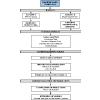当前位置:
X-MOL 学术
›
Phys. Rev. Materials
›
论文详情
Our official English website, www.x-mol.net, welcomes your
feedback! (Note: you will need to create a separate account there.)
Machine learning study of magnetism in uranium-based compounds
Physical Review Materials ( IF 3.1 ) Pub Date : 2020-06-19 , DOI: 10.1103/physrevmaterials.4.064414 Ayana Ghosh , Filip Ronning , Serge M. Nakhmanson , Jian-Xin Zhu
Physical Review Materials ( IF 3.1 ) Pub Date : 2020-06-19 , DOI: 10.1103/physrevmaterials.4.064414 Ayana Ghosh , Filip Ronning , Serge M. Nakhmanson , Jian-Xin Zhu

|
Actinide and lanthanide-based materials display exotic properties that originate from the presence of itinerant or localized electrons and include unconventional superconductivity and magnetism, hidden order, and heavy-fermion behavior. Due to the strongly correlated nature of the electrons, magnetic properties of these compounds depend sensitively on applied magnetic field and pressure, as well as on chemical doping. However, precise connection between the structure and magnetism in actinide-based materials is currently unclear. In this investigation, we established such structure-property links by assembling and mining two datasets that aggregate, respectively, the results of high-throughput density functional theory simulations and experimental measurements for the families of uranium- and neptunium-based binary compounds. Various regression algorithms were utilized to identify correlations among accessible attributes (features or descriptors) of the material systems and predict their cation magnetic moments and general forms of magnetic ordering. Descriptors representing compound structural parameters and cation -subshell occupation numbers were identified as most important for accurate predictions. The best machine learning model developed employs the random forest regression algorithm. It can predict both spin and orbit moment size with root-mean-square error of and , respectively. The random forest classification algorithm is used to predict the ordering (paramagnetic, ferromagnetic, and antiferromagnetic) of such systems with 76% accuracy.
中文翻译:

铀基化合物中磁性的机器学习研究
基于系元素和镧系元素的材料显示出奇异的特性,这些特性源自流动剂的存在或局部存在 电子,包括非常规的超导和磁性,隐藏的阶和重费米子行为。由于电子,这些化合物的磁性能敏感地取决于所施加的磁场和压力以及化学掺杂。然而,目前尚不清楚基于act系元素的材料的结构与磁性之间的精确连接。在这项研究中,我们通过组装和挖掘两个数据集建立了这样的结构-属性链接,分别收集了高通量密度泛函理论模拟结果和基于铀和n的二元化合物家族的实验测量结果。利用各种回归算法来识别材料系统的可访问属性(特征或描述符)之间的相关性,并预测其阳离子磁矩和磁序的一般形式。代表复合结构参数和阳离子的描述符-subshell占用数量被确定为对于准确预测最重要的。开发的最佳机器学习模型采用随机森林回归算法。它可以预测自旋和轨道力矩大小,均方根误差为 和 , 分别。随机森林分类算法用于以76%的准确性预测此类系统的排序(顺磁性,铁磁性和反铁磁性)。
更新日期:2020-06-19
中文翻译:

铀基化合物中磁性的机器学习研究
基于系元素和镧系元素的材料显示出奇异的特性,这些特性源自流动剂的存在或局部存在 电子,包括非常规的超导和磁性,隐藏的阶和重费米子行为。由于电子,这些化合物的磁性能敏感地取决于所施加的磁场和压力以及化学掺杂。然而,目前尚不清楚基于act系元素的材料的结构与磁性之间的精确连接。在这项研究中,我们通过组装和挖掘两个数据集建立了这样的结构-属性链接,分别收集了高通量密度泛函理论模拟结果和基于铀和n的二元化合物家族的实验测量结果。利用各种回归算法来识别材料系统的可访问属性(特征或描述符)之间的相关性,并预测其阳离子磁矩和磁序的一般形式。代表复合结构参数和阳离子的描述符-subshell占用数量被确定为对于准确预测最重要的。开发的最佳机器学习模型采用随机森林回归算法。它可以预测自旋和轨道力矩大小,均方根误差为 和 , 分别。随机森林分类算法用于以76%的准确性预测此类系统的排序(顺磁性,铁磁性和反铁磁性)。











































 京公网安备 11010802027423号
京公网安备 11010802027423号